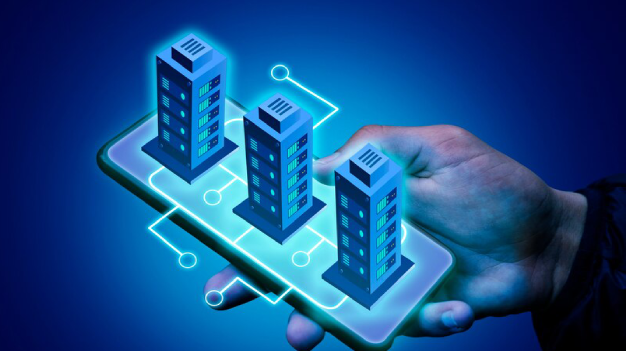Law Enforcement

Law Enforcement
Modern law enforcement agencies rely heavily on a wide range of critical assets—from patrol vehicles, surveillance networks, and body-worn cameras to communication systems, drones, and forensic lab equipment. The failure of any of these systems can compromise public safety, delay emergency response, or disrupt crucial investigations. AI-based predictive maintenance provides law enforcement with a proactive approach to managing equipment health by continuously analyzing sensor data and usage patterns to detect early signs of wear, malfunction, or failure. By forecasting issues before they happen, departments can schedule timely maintenance, reduce unplanned downtime, and keep critical operations running smoothly.
This technology not only supports operational continuity but also contributes to better budget allocation, asset lifecycle optimization, and increased readiness in mission-critical situations. Whether it's ensuring 24/7 surveillance functionality or maintaining a fleet of patrol vehicles, AI helps law enforcement stay ahead of failures rather than react to them.
Key Benefits:
| Feature | Description |
|---|---|
| 🚓 Patrol Vehicle Health Monitoring | Continuously track vehicle diagnostics (engine performance, battery health, tire pressure, etc.) to prevent breakdowns during patrols. |
| 📷 Surveillance & CCTV System Uptime | Predict potential camera failures or network lags to ensure uninterrupted video monitoring in high-risk areas. |
| 🎤 Body Camera & Communication Maintenance | Detect battery degradation, recording faults, or signal issues in body cams and radios to avoid evidence loss or communication blackouts. |
| 🛠️ Smart Facility Management | Apply predictive maintenance to buildings—HVAC, elevators, and security systems—to improve energy efficiency and reduce repair costs. |
| 🚁 Drone & Specialized Equipment Monitoring | Track maintenance needs of drones, mobile command centers, and forensic tools to ensure operational readiness. |
| 📊 Optimized Maintenance Scheduling | Use AI-driven insights to schedule maintenance during off-duty hours, minimizing disruptions to field work and emergency response. |
| 💰 Budget Optimization & Lifecycle Management | Extend asset life and reduce emergency repair costs through predictive planning and efficient resource use. |
Healthcare

Healthcare
Healthcare institutions depend on highly sensitive and life-saving equipment—from MRI machines and ventilators to lab analyzers, infusion pumps, and sterilization systems. Any unexpected failure can compromise patient care, delay critical diagnostics, and increase operational risks. AI-based predictive maintenance empowers hospitals and clinics to monitor equipment performance in real time, detect anomalies early, and predict potential failures before they disrupt care.
By transitioning from reactive repairs to data-driven maintenance planning, healthcare providers can ensure uninterrupted service delivery, improve patient safety, and optimize equipment lifespans—ultimately reducing costs and enhancing clinical outcomes.
Key Benefits
| Feature | Description |
|---|---|
| 🩺 Critical Equipment Monitoring | Continuously track the performance of essential devices like ventilators, infusion pumps, and anesthesia machines to ensure 24/7 availability. |
| 🧲 MRI & Imaging System Reliability | Predict failures in MRI, CT, and X-ray machines to avoid costly downtime and appointment cancellations. |
| 🧪 Laboratory Equipment Uptime | Ensure uninterrupted diagnostic workflows by monitoring analyzers, centrifuges, and refrigeration units for early signs of malfunction. |
| 🛠️ Facility Infrastructure Maintenance | Apply predictive maintenance to hospital HVAC systems, elevators, and backup power systems to maintain a safe, compliant environment. |
| 📈 Preventive Scheduling Optimization | Plan maintenance during low-use hours using AI forecasts to reduce disruptions to patient care and lab operations. |
| 📉 Downtime & Risk Reduction | Lower the risk of unexpected failures that could impact patient treatment, lab results, or surgical procedures. |
| 💰 Cost Efficiency & Asset Longevity | Reduce emergency repair costs and extend the life of expensive medical devices through condition-based maintenance. |
Logistics

Education
Modern educational institutions depend on a wide range of digital and physical infrastructure—from smart boards and campus networks to HVAC systems, lab equipment, and transportation fleets. Unexpected breakdowns can disrupt learning, delay schedules, and increase maintenance costs. AI-based predictive maintenance helps schools, colleges, and universities monitor their assets in real time, identify early signs of wear or malfunction, and take action before failures occur.
By leveraging AI to move from reactive repairs to preventive strategies, educational institutions can ensure smooth academic operations, create safer environments for students and staff, and make smarter use of maintenance budgets.
Key Benefits
| Feature | Description |
|---|---|
| 🖥️ Classroom Technology Monitoring | Track and maintain smart boards, projectors, tablets, and computer systems to avoid disruptions during lessons. |
| 🌐 Network & IT Infrastructure Uptime | Predict network failures or hardware issues in campus IT infrastructure to keep online classes and digital platforms running smoothly. |
| 🧪 Lab Equipment Reliability | Ensure science and computer labs remain fully operational by monitoring lab instruments and hardware for early faults. |
| ❄️ HVAC & Facility Systems Maintenance | Apply predictive maintenance to HVAC, lighting, and energy systems to ensure comfort, safety, and energy efficiency across the campus. |
| 🚌 Transportation Fleet Readiness | Monitor school buses and campus vehicles for engine, battery, and tire issues to ensure reliable student transport. |
| 📅 Maintenance Scheduling Efficiency | Schedule repairs and servicing during holidays or off-hours based on AI-driven usage and failure forecasts. |
| 💰 Cost Control & Asset Longevity | Optimize maintenance budgets and extend the lifespan of institutional assets through timely, condition-based servicing. |
Retail & E-Commerce

Retail & E-Commerce
In retail and e-commerce, uptime is critical—from point-of-sale systems and warehouse robotics to refrigeration units and delivery fleets. Any equipment failure can disrupt customer experiences, delay orders, and result in lost revenue. AI-based predictive maintenance empowers businesses to monitor essential systems, detect faults early, and prevent failures before they impact operations.
By transitioning from reactive maintenance to intelligent, data-driven strategies, retail and e-commerce companies can ensure seamless service, reduce downtime, and protect high-value assets—while optimizing costs and operational efficiency.
Key Benefits
| Feature | Description |
|---|---|
| 🧾 POS & Checkout System Monitoring | Ensure uninterrupted customer transactions by predicting hardware and software issues in billing systems and checkout counters. |
| 🧊 Refrigeration & Cold Chain Maintenance | Monitor temperature-controlled units to avoid spoilage of perishable goods and reduce energy inefficiencies. |
| 📦 Warehouse Equipment & Robotics Health | Track and predict issues in conveyor belts, pick-and-place systems, and inventory robotics to keep fulfillment centers running smoothly. |
| 🚚 Delivery Vehicle Diagnostics | Prevent last-mile delivery delays by predicting maintenance needs for vans, trucks, and EV fleets. |
| 🌐 E-Commerce Infrastructure Support | Identify potential failures in server rooms, cooling systems, and network hardware to support high availability of online platforms. |
| 📅 Smart Maintenance Scheduling | Use AI predictions to plan maintenance during off-peak retail hours to avoid customer disruptions. |
| 💰 Reduced Downtime & Cost Efficiency | Minimize unplanned outages and emergency repairs, while extending asset lifespan and improving ROI. |
Real Estate

Real Estate
Real estate properties—both commercial and residential—depend on the smooth functioning of building systems like HVAC, elevators, lighting, plumbing, and security. Unplanned failures can lead to tenant dissatisfaction, increased operational costs, and damage to property value. AI-based predictive maintenance enables property managers and facility operators to monitor critical systems in real-time, detect early signs of wear, and schedule timely interventions before breakdowns occur.
With data-driven maintenance strategies, real estate operators can reduce downtime, improve energy efficiency, enhance occupant comfort, and extend the life of building assets—all while lowering total maintenance costs.
Key Benefits
| Feature | Description |
|---|---|
| 🌡️ HVAC System Monitoring | Predict heating and cooling system issues to maintain indoor air quality, temperature control, and tenant comfort. |
| 🛗 Elevator & Escalator Uptime | Monitor usage patterns and mechanical health to prevent outages and ensure passenger safety in high-rise buildings. |
| 🔒 Security & Access Control Reliability | Detect faults in surveillance, access control, and alarm systems to ensure uninterrupted building security. |
| 💡 Smart Lighting & Energy Systems | Prevent lighting failures and optimize energy usage with predictive alerts and condition-based servicing. |
| 🚿 Plumbing & Water System Health | Identify leaks, pressure anomalies, and equipment degradation in plumbing systems before major damage occurs. |
| 📆 Scheduled Maintenance Optimization | Use AI forecasts to schedule maintenance during low occupancy or off-peak hours to minimize tenant disruption. |
| 📈 Enhanced Asset Lifecycle Management | Prolong the lifespan of expensive building infrastructure and reduce repair expenses through data-informed planning. |
Tourism & Hospitality

Tourism & Hospitality
The tourism and hospitality industry thrives on seamless guest experiences, which rely on the flawless functioning of infrastructure such as HVAC systems, elevators, kitchen equipment, entertainment systems, and room automation technologies. Equipment failures can result in service delays, guest dissatisfaction, and brand damage. AI-based predictive maintenance allows hotels, resorts, cruise lines, and entertainment venues to proactively monitor these assets, predict failures, and schedule timely maintenance without interrupting operations.
By leveraging AI for real-time diagnostics and failure forecasting, hospitality businesses can enhance service reliability, reduce unplanned downtime, and maintain a consistently high standard of comfort and convenience for guests.
Key Benefits
| Feature | Description |
|---|---|
| 🌬️ HVAC & Climate Control Maintenance | Ensure guest comfort by predicting failures in heating, ventilation, and air conditioning systems across rooms and common areas. |
| 🛗 Elevator & Guest Facility Monitoring | Prevent disruptions by monitoring mechanical systems in elevators, escalators, and accessibility infrastructure. |
| 🍽️ Kitchen & Food Service Equipment | Detect issues in refrigeration, ovens, dishwashers, and other kitchen appliances to maintain food safety and operational efficiency. |
| 📺 Entertainment & Room Automation | Monitor in-room technology, lighting, and smart controls to deliver a seamless, modern guest experience. |
| 🛎️ Facility-Wide Service Uptime | Predict failures in laundry systems, spa equipment, and other guest-facing services to avoid service disruption. |
| 📅 Maintenance Scheduling Intelligence | Plan maintenance during non-peak check-in/out hours using AI forecasts, reducing guest inconvenience and operational impact. |
| 💰 Reduced Downtime & Cost Savings | Lower emergency repair costs and extend the life of hospitality infrastructure with proactive, data-driven maintenance strategies. |

 Law Enforcement
Law Enforcement Healthcare
Healthcare Education
Education Retail &
E-Commerce
Retail &
E-Commerce Real
Estate
Real
Estate Tourism &
Hospitality
Tourism &
Hospitality